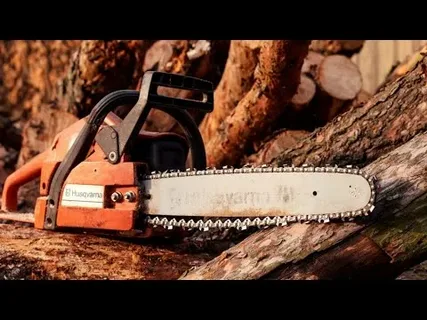A chainsaw is a powerful tool that can make outdoor work much easier—until it refuses to start. If you’ve ever found yourself pulling the starter cord repeatedly with no luck, you’re not alone. A chainsaw that won’t start is a common issue faced by both professionals and DIY enthusiasts. In this article, we’ll explore the most common reasons why your chainsaw won’t start and offer practical troubleshooting steps to help you get it running again.
1. Check the Basics First
Before diving into more complex repairs, it’s crucial to rule out simple issues that might be preventing your chainsaw from starting.
Fuel Issues
- Old or stale fuel: Gasoline breaks down over time. If the fuel in your chainsaw is more than 30 days old, drain it and replace it with fresh fuel.
- Wrong fuel mix: For 2-stroke engines, an incorrect oil-to-gas ratio can cause starting problems. Always use the manufacturer-recommended mix.
Spark Plug Problems
- Dirty or worn spark plug: A fouled spark plug won’t produce a proper spark. Remove it and check for carbon buildup or damage. Replacing it may resolve the issue.
- Loose spark plug wire: Ensure the wire is firmly connected to the spark plug.
2. Air and Fuel Flow Problems
Your chainsaw needs the right balance of air and fuel to start and run correctly.
Clogged Air Filter
A dirty air filter can choke the engine, making it hard to start. Remove the filter and clean it with warm, soapy water or replace it if it’s too dirty or damaged.
Carburetor Issues
- Dirty or gummed-up carburetor: If your chainsaw has been sitting idle for a long time, the carburetor might be clogged. Cleaning it or using a carburetor cleaner can help.
- Improper carburetor settings: If the mixture is off, the engine may not start. Adjusting the carburetor screws (usually labeled H, L, and T) may be necessary, but consult your manual first.
3. Mechanical Problems
If you’ve checked fuel, spark, and airflow and your chainsaw won’t start, it may be time to look into more serious mechanical issues.
Flooded Engine
If you’ve pulled the starter cord multiple times, the engine might be flooded with fuel.
Fix: Remove the spark plug and let the excess fuel evaporate. Pull the starter cord a few times to clear the cylinder, then replace the spark plug and try starting again.
Compression Issues
Low engine compression due to worn piston rings or a damaged cylinder can prevent starting. Unfortunately, this often requires professional repair or engine replacement.
4. Electrical System Malfunctions
Many modern chainsaws have complex ignition systems that can fail.
- Faulty ignition coil: If the coil isn’t producing a strong spark, your chainsaw won’t start. Use an ignition tester to check.
- Kill switch malfunction: Make sure the on/off switch is functioning properly and hasn’t been accidentally set to “off.”
Final Thoughts
If your chainsaw won’t start, don’t panic. In many cases, the issue can be resolved with a few simple checks and adjustments. Start with the basics—fuel, spark, and air—before moving on to more complex possibilities. Regular maintenance is key to preventing problems before they start. By staying proactive, you’ll reduce the chance of finding yourself in the frustrating situation where your chainsaw won’t start right when you need it most.


